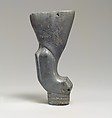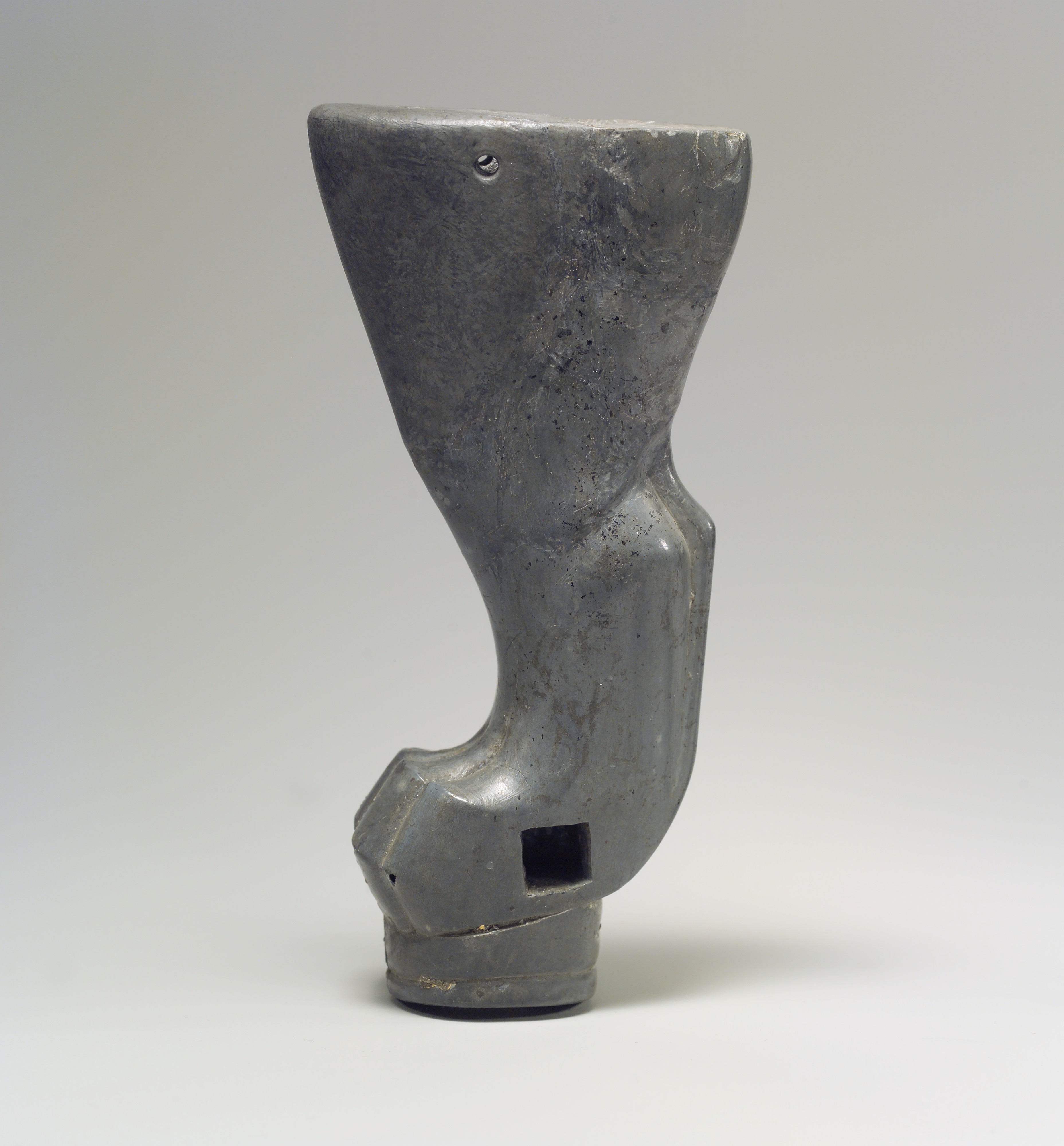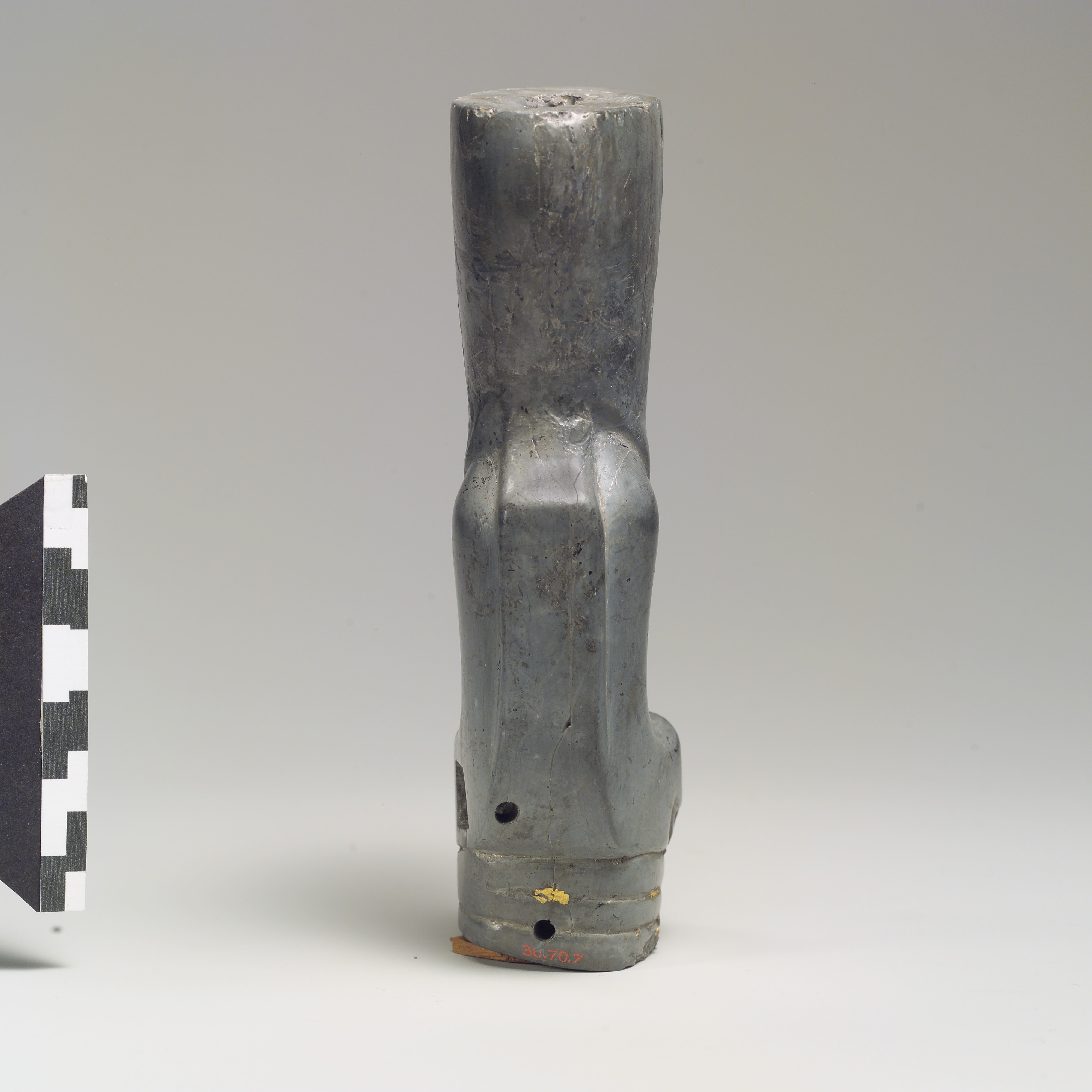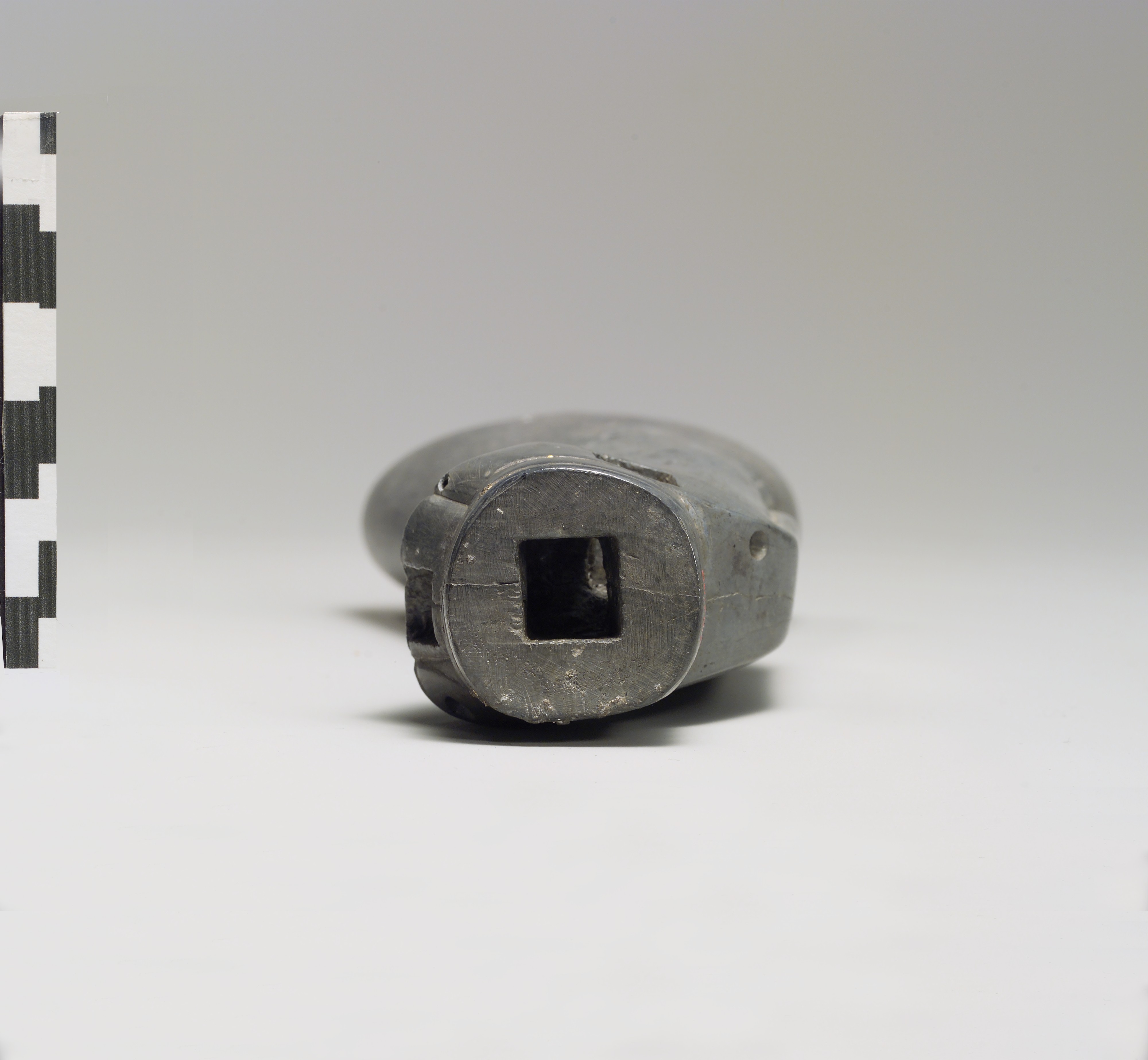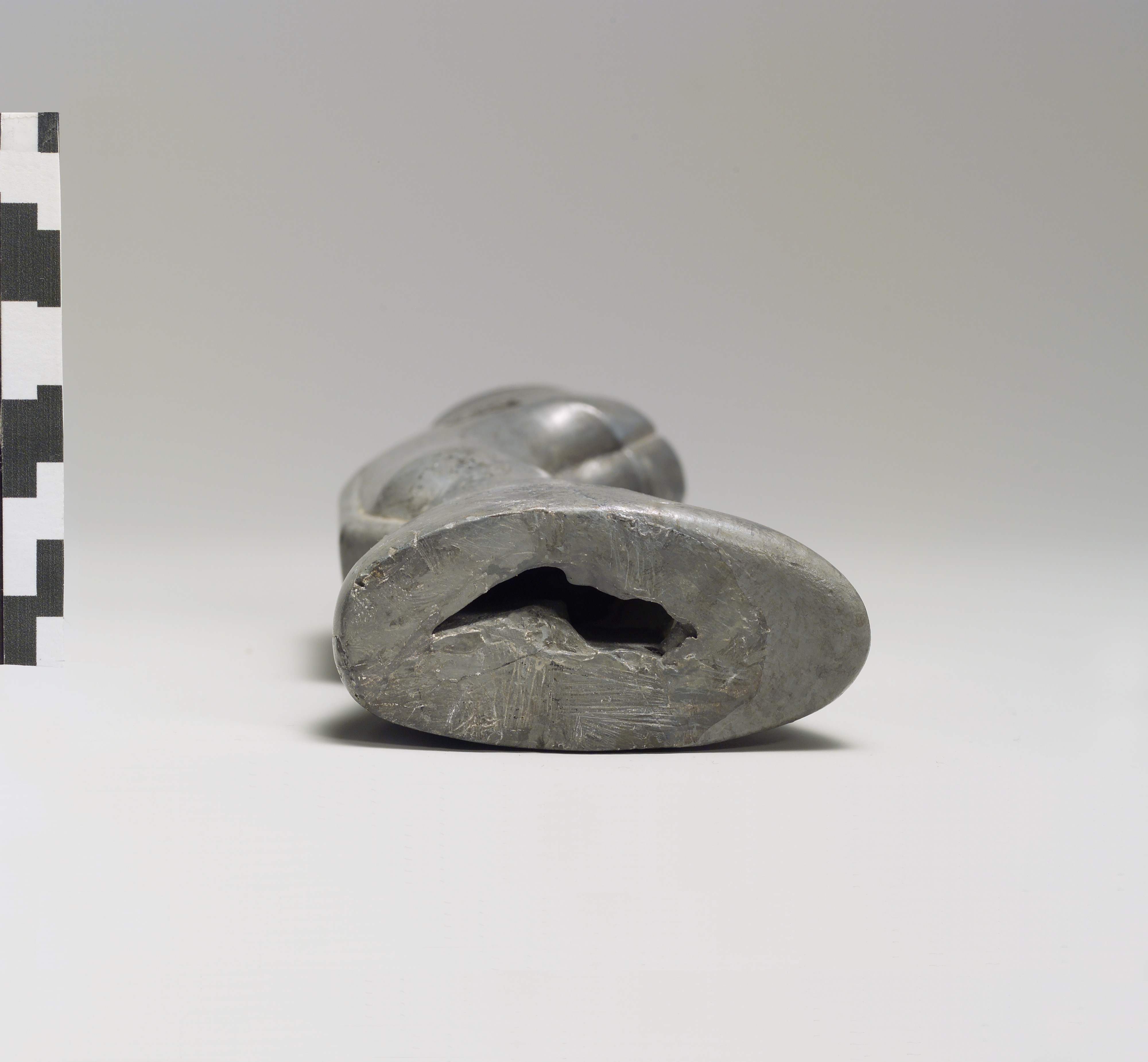Furniture support: lion's leg
Not on view
This piece is one of several furniture elements, carved in the form of lion legs, probably found at the site of a palace at Acemhöyük in central Anatolia. The massive size of the upper part of the leg suggests this represents the animal’s rear leg. One hooked claw is visible in side view. Like the other pieces of this type in the Metropolitan Museum’s collection (36.70.5, 36.152.1), this leg sits on a base with horizontal grooves. The overall gray color indicates that the object was exposed to considerable heat, perhaps during the destruction of the palace. Traces of gold foil still remain on the base of this leg, although not on the others. The legs were most likely carved out of hippopotamus incisors, as the ends of the pulp cavities are preserved in the upper parts. Dowel holes on the flanks allowed for attachment to an upper element. The positioning of mortises and dowel holes on the paws suggests that struts connected the legs to one or more other furniture elements. There are also mortises cut into the bases for further attachment. Furniture legs of this type derive from Egypt, where they were a common feature of chairs and royal thrones, appearing for example on a Dynasty 4 statue of Khafre. However, unlike their Egyptian inspirations, the ivory lion legs from Acemhöyük are arranged without regard for the anatomy of actual lions, with all four legs apparently in the form of the rear leg, even when placed at the front of the piece of furniture.
Due to rights restrictions, this image cannot be enlarged, viewed at full screen, or downloaded.
This artwork is meant to be viewed from right to left. Scroll left to view more.
